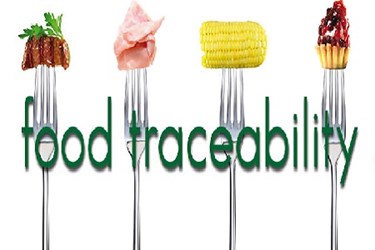7 Ways Supply Chain Traceability Solutions Benefit Food Makers

By Sam Lewis

When the phrase “electronic traceability solution” is spoken in the food industry, some other phrases might instantly come to mind: “From farm/factory to fork,” “from harvest to table,” or “from plant to plate.” These phrases offer comfort that every food product that is tracked and traced is safe, and if a contamination event were to happen, the food would never reach the consumer. However, as we all know, even with the best prevention methods and traceability solutions in place, contaminations still occur.
Obviously, electronic traceability solutions aim to mitigate food safety risks and protect the public from food safety-related events, and for the most part, they do a good job at it. However, electronic traceability solutions provide food companies with benefits that stretch beyond the realm of food safety; they offer management and operational efficiencies.
Better, Faster Reponses
An effective food traceability system helps reduce the many stresses that occur from a recall by handling each aspect of the recall swiftly, accurately, and proficiently. These systems enable you to be in better control of your business when food safety incidents occur.
Global Expansion
It’s no secret that the food industry is expanding its reach globally. Products are being sourced and shipped from far reaches of the globe to meet the growing needs of demanding consumers. For food companies to be successful on the global level, streamlining electronic data with traceability solutions is imperative. Further, governing bodies are becoming more and more stringent regarding traceability requirements. By having traceability systems in place at your company, your products become more attractive to new, untapped markets.
More Customers
Speaking of expansion, if your firm is looking for more companies (e.g., grocers and restaurants) to purchase your food products, having traceability solutions in place may help sway them to you. As government food safety regulations grow more stringent, your customers will want to know that what you’re producing is safe. Having a traceability solution in place is just one of many ways to show them your products are in fact safe. Additionally, if a potential customer requires electronic records to be kept, you may be a step ahead of your competitors.
Brand Recognition
This may seem odd, but having a traceability system in place can help build your brand. Traceability systems produce a lot of data, which, in turn, means you have a lot to say about your food products. Consumers are increasingly curious about where food is grown, the methods used in production, and how it was stored and transported. If you can properly market this information to consumers, there is a lot of potential to persuade them to buy your product. If you deliver what consumers want, your company will likely garner a devoted following of a repeat buyers. And, obviously, repeat customers are beneficial to profits.
Enhanced Inventory Management
When thinking about traceability, safety and reaction times to recalls are often the first things that come to mind. However, improved inventory management is another benefit a traceability solution can provide. These systems do this by allowing you to know where your products are and how old they are in real time. Further, by using this data, you can manage production rates and adjust production quantities — both of which help bolster the bottom line.
Better Decision Making
All the information that is gathered by an electronic traceability solution can not only help you build your brand, it can help your company make more-informed decisions. Reporting and business intelligence from this traceability data can provide you with market trends and consumer tendencies to help your company stay on top of an ultra-competitive market.
Reduced Production Costs And Minimized Downtime
Food traceability systems can not only help drive profits upward, they can help push production costs down. They do this by allowing entrance to wider markets and giving stricter command of the production line. Food manufacturing facilities will close for hours, days, even weeks when a recall occurs. All this shut down time is spent finding the source of the contamination issue, isolating it, and containing it. Traceability solutions can reduce the time spent dealing with the issue to just a few minutes, negating big chunks of shut down time. This in turn keeps products rolling out the door and profits coming in.
